Top Trending Finance & Stock Market News & Highlights


GST reform: starting Monday, these goods will be subject to the highest tax. View the complete list
September 22 GST changes: Under the new tax structure, which goes into effect on Monday, items falling within these categories will be subject to the newly revised highest tax rate of 40% GST. View the items' list here.After its 56th meeting on September 3, 2025, the GST Council, which is led by the Indian federal government, voted to streamline the indirect tax system in India by redesigning the current goods and service tax (GST) slab structure into a "two-tier" system.Indian customers will benefit from a revamped "two-tier" tax structure that goes into effect on Monday, September 22, 2025. Depending on the type of commodity sold in the country, it will be subject to either the 5% or 18% tax band. In India, GST is now imposed in four slabs: 5%, 12%, 18%, and 28%. However, the government has since modified these slabs. Many products sold in the Indian economy will see price reductions as a result of the federal government's action; nevertheless, starting Monday, a wide range of products will also be subject to higher consumer taxes. 1. Sin Goods: Generally speaking, sin goods are things that are detrimental to society and health, such as cigarettes and pan masala. Cigarettes, pan masala, beedi, and other tobacco goods including chewing tobacco and gutka, as well as online gaming and gambling, would all be subject to a 40% GST tax starting on Monday, September 22, 2025. 2. Luxury cars: Four-wheelers with an internal combustion engine (ICE) capacity greater than 1,200cc and a length greater than four meters were also placed in a 40% tax level by the GST Council. In the past, the ex-showroom pricing of SUVs and MPVs, which are included in this group, was increased by 28% GST and 22% Cess. 3. Over 350cc two-wheelers: The GST Council raised the tax rate for two-wheelers with engines larger than 350cc from 28% GST and 3% Cess to 40%. Despite the removal of the Cess levy, two-wheelers with engines larger than 350cc will now be subject to a higher tax rate. 4. Soft drinks: The central government raised the GST rate from 28% to 40%, which will result in a price increase for soft drinks and other non-alcoholic beverages like Coca-Cola, Pepsi, Mountain Dew, Fanta, and flavor-infused waters. 5. Items that cost more when you're in the 18% tax bracket: Items that will be subject to GST at the higher 18% slab starting on Monday, September 22, 2025, include dining at restaurants, particularly those with air conditioning and premium outlets; consumer durables like refrigerators, washing machines, and air conditioners; beauty and grooming services at salons and spas; and high-end smartphones and imported devices.
Published 23 Sep 2025 01:19 PM
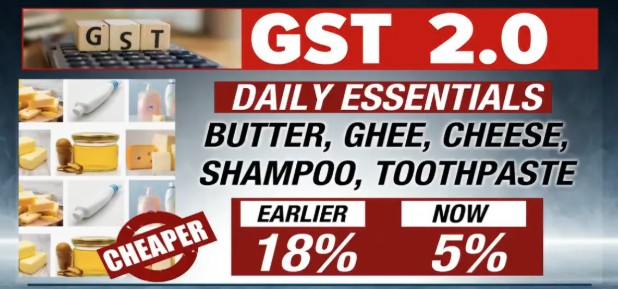

Live Updates on New GST Rates: When GST 2.0 goes into effect, food, cars, and televisions all get cheaper.
GST Reforms 2025 List: Goods and Services Tax (GST) reforms have become effective today, September 22, marking a historical shift in the country’s indirect taxation by merging four slabs into two (5% and 18%) and a special tax slab of 40% for “sin goods".The GST council, led by Finance Minister Nirmala Sitharaman, early in September announced a major overhaul in the indirect taxation system, aimed at simplifying the slabs, boosting the consumption and rationalizing the rates. Under the new plan, the government is set to merge the four slabs into two main categories with an additional “sin tax" bracket: 5% slab — for essential goods. 18% slab – for most other goods and services. 40% slab – for luxury and sin goods such as tobacco, alcohol, betting, and online gaming. This consolidation is expected to make tax compliance easier and also reduce prices on many items currently taxed at 12% or 28%.This consolidation is expected to make tax compliance easier and also reduce prices on many items currently taxed at 12% or 28%.Consumers will see essential items becoming cheaper from September 22, as several sectors from FMCG to Auto have announced earlier to pass on the benefits of lower GST to them.
Published 22 Sep 2025 05:13 PM


Live updates for the ITR due date: Will there be another extension of the income tax return deadline?
Date of ITR due REAL-time updates: The deadline for filing Income Tax Returns (ITR) for the assessment year 2025–2026 is now. Over 6.69 crore returns have already been received by the Income Tax Department, of which over 6.03 crore have been validated and 4 crore have been processed.Taxpayers who miss today's deadline risk interest on unpaid taxes, delayed refunds, and late fines of up to ₹5,000 (limited at ₹1,000 for individuals with incomes up to ₹5 lakh). Therefore, it is essential to file and confirm returns on time in order to prevent fines and guarantee prompt refund processing.The deadline is applicable to non-audit instances, such as the majority of salaried individuals, small enterprises or professions under the presumptive taxation plan, and Hindu Undivided Families (HUFs). It is recommended that taxpayers refrain from spreading false information about extensions and instead rely solely on official updates from Income Tax India.In order to assist last-minute filers in appropriately completing submissions, the department's helpdesk is open around-the-clock and provides assistance via phone, live chat, WebEx sessions, and social media.The department's help line is open around-the-clock, providing assistance via phone, live chat, WebEx sessions, and social media to help filers who are submitting at the last minute appropriately.
Published 15 Sep 2025 05:53 PM


Closing Bell: Sensex up 324 points, Nifty above 24,950; IT and PSU Banks rise, automobiles down
On September 10, Indian equities indices concluded well, with the Nifty closing above 24,950. The Nifty was up 104.5 points, or 0.42 percent, at 24,973.10 at the closing, while the Sensex was up 323.83 points, or 0.40 percent, at 81,425.15.We'll be returning tomorrow morning with all the most recent news and alerts as we wind up today's Moneycontrol live market blog. To view all of the global market activity, please visit https://www.moneycontrol.com/markets/global-indices.On Wednesday, markets gained almost half a percent, continuing their upward trajectory. Following a gap-up beginning, the Nifty index spent the first half of the day moving within a small range. However, volatility in the second half of the day reduced some gains, and it ultimately finished around 24,973 levels.With advances of more than 2.5 percent, the IT sector maintained its recovery, followed by the real estate, banking, and energy sectors. The auto industry, on the other hand, saw profit booking following multiple outperforming sessions, losing more than 1%. With the midcap and smallcap indices rising between 0.75% and 1%, market breadth stayed strong, supporting the bullish tone in both frontline and broader markets.Positive foreign capital market flows following a period of persistent depreciation, as well as increased confidence regarding the status of trade discussions between the US and India, helped to boost sentiment and maintain the upswing.Although the markets are slowly rising due to encouraging signals, the Nifty will need to maintain its participation from the two main industries—banking and IT—in order to progress toward the 25,250–25,400 range. Support has moved to the 24,650–24,750 level on the downside. In order to build up fundamentally sound counters across the board, we advise employing intermediate drops or consolidation phases while keeping a positive bias.
Published 10 Sep 2025 08:40 PM


Finance & Stock Market
Finance & Stock Market is financial management, which covers tasks including forecasting, budgeting, borrowing, lending, and investing. Finance can be broadly classified into three categories:
- Personal Finance
- Corporate Finance
- Public/government Finance
Lending, banking, investing, forecasting, and a wide range of other topics pertaining to the distribution and trade of financial assets are all included in the broad industry that is finance.
- NYSE - USA
- Nasdaq - USA
- Euronext - Netherlands
- Shanghai Stock Exchange - China
- Japan Exchange Group - Japan
- Shenzhen Stock Exchange - China
- Hong Kong Exchanges - Hong Kong
- National Stock Exchange of India - India
- LSE Group - UK
- Saudi Exchange - Saudi Arabia


GST reform: starting Monday, these goods will be subject to the highest tax. View the complete list
September 22 GST changes: Under the new tax structure, which goes into effect on Monday, items falling within these categories will be subject to the newly revised highest tax rate of 40% GST. View the items' list here.After its 56th meeting on September 3, 2025, the GST Council, which is led by the Indian federal government, voted to streamline the indirect tax system in India by redesigning the current goods and service tax (GST) slab structure into a "two-tier" system.Indian customers will benefit from a revamped "two-tier" tax structure that goes into effect on Monday, September 22, 2025. Depending on the type of commodity sold in the country, it will be subject to either the 5% or 18% tax band. In India, GST is now imposed in four slabs: 5%, 12%, 18%, and 28%. However, the government has since modified these slabs. Many products sold in the Indian economy will see price reductions as a result of the federal government's action; nevertheless, starting Monday, a wide range of products will also be subject to higher consumer taxes. 1. Sin Goods: Generally speaking, sin goods are things that are detrimental to society and health, such as cigarettes and pan masala. Cigarettes, pan masala, beedi, and other tobacco goods including chewing tobacco and gutka, as well as online gaming and gambling, would all be subject to a 40% GST tax starting on Monday, September 22, 2025. 2. Luxury cars: Four-wheelers with an internal combustion engine (ICE) capacity greater than 1,200cc and a length greater than four meters were also placed in a 40% tax level by the GST Council. In the past, the ex-showroom pricing of SUVs and MPVs, which are included in this group, was increased by 28% GST and 22% Cess. 3. Over 350cc two-wheelers: The GST Council raised the tax rate for two-wheelers with engines larger than 350cc from 28% GST and 3% Cess to 40%. Despite the removal of the Cess levy, two-wheelers with engines larger than 350cc will now be subject to a higher tax rate. 4. Soft drinks: The central government raised the GST rate from 28% to 40%, which will result in a price increase for soft drinks and other non-alcoholic beverages like Coca-Cola, Pepsi, Mountain Dew, Fanta, and flavor-infused waters. 5. Items that cost more when you're in the 18% tax bracket: Items that will be subject to GST at the higher 18% slab starting on Monday, September 22, 2025, include dining at restaurants, particularly those with air conditioning and premium outlets; consumer durables like refrigerators, washing machines, and air conditioners; beauty and grooming services at salons and spas; and high-end smartphones and imported devices.


Live Updates on New GST Rates: When GST 2.0 goes into effect, food, cars, and televisions all get cheaper.
GST Reforms 2025 List: Goods and Services Tax (GST) reforms have become effective today, September 22, marking a historical shift in the country’s indirect taxation by merging four slabs into two (5% and 18%) and a special tax slab of 40% for “sin goods".The GST council, led by Finance Minister Nirmala Sitharaman, early in September announced a major overhaul in the indirect taxation system, aimed at simplifying the slabs, boosting the consumption and rationalizing the rates. Under the new plan, the government is set to merge the four slabs into two main categories with an additional “sin tax" bracket: 5% slab — for essential goods. 18% slab – for most other goods and services. 40% slab – for luxury and sin goods such as tobacco, alcohol, betting, and online gaming. This consolidation is expected to make tax compliance easier and also reduce prices on many items currently taxed at 12% or 28%.This consolidation is expected to make tax compliance easier and also reduce prices on many items currently taxed at 12% or 28%.Consumers will see essential items becoming cheaper from September 22, as several sectors from FMCG to Auto have announced earlier to pass on the benefits of lower GST to them.


Live updates for the ITR due date: Will there be another extension of the income tax return deadline?
Date of ITR due REAL-time updates: The deadline for filing Income Tax Returns (ITR) for the assessment year 2025–2026 is now. Over 6.69 crore returns have already been received by the Income Tax Department, of which over 6.03 crore have been validated and 4 crore have been processed.Taxpayers who miss today's deadline risk interest on unpaid taxes, delayed refunds, and late fines of up to ₹5,000 (limited at ₹1,000 for individuals with incomes up to ₹5 lakh). Therefore, it is essential to file and confirm returns on time in order to prevent fines and guarantee prompt refund processing.The deadline is applicable to non-audit instances, such as the majority of salaried individuals, small enterprises or professions under the presumptive taxation plan, and Hindu Undivided Families (HUFs). It is recommended that taxpayers refrain from spreading false information about extensions and instead rely solely on official updates from Income Tax India.In order to assist last-minute filers in appropriately completing submissions, the department's helpdesk is open around-the-clock and provides assistance via phone, live chat, WebEx sessions, and social media.The department's help line is open around-the-clock, providing assistance via phone, live chat, WebEx sessions, and social media to help filers who are submitting at the last minute appropriately.


Closing Bell: Sensex up 324 points, Nifty above 24,950; IT and PSU Banks rise, automobiles down
On September 10, Indian equities indices concluded well, with the Nifty closing above 24,950. The Nifty was up 104.5 points, or 0.42 percent, at 24,973.10 at the closing, while the Sensex was up 323.83 points, or 0.40 percent, at 81,425.15.We'll be returning tomorrow morning with all the most recent news and alerts as we wind up today's Moneycontrol live market blog. To view all of the global market activity, please visit https://www.moneycontrol.com/markets/global-indices.On Wednesday, markets gained almost half a percent, continuing their upward trajectory. Following a gap-up beginning, the Nifty index spent the first half of the day moving within a small range. However, volatility in the second half of the day reduced some gains, and it ultimately finished around 24,973 levels.With advances of more than 2.5 percent, the IT sector maintained its recovery, followed by the real estate, banking, and energy sectors. The auto industry, on the other hand, saw profit booking following multiple outperforming sessions, losing more than 1%. With the midcap and smallcap indices rising between 0.75% and 1%, market breadth stayed strong, supporting the bullish tone in both frontline and broader markets.Positive foreign capital market flows following a period of persistent depreciation, as well as increased confidence regarding the status of trade discussions between the US and India, helped to boost sentiment and maintain the upswing.Although the markets are slowly rising due to encouraging signals, the Nifty will need to maintain its participation from the two main industries—banking and IT—in order to progress toward the 25,250–25,400 range. Support has moved to the 24,650–24,750 level on the downside. In order to build up fundamentally sound counters across the board, we advise employing intermediate drops or consolidation phases while keeping a positive bias.


Independent, Agile, Worldwide: How Team Pumpkin is upending the traditional agency structure
With its motto of "creative first, digital always," Team Pumpkin has made a name for itself in a field where performance and creativity frequently collide. Ranjeet Kumar founded the independent agency, which has expanded from its Indian origins to a global footprint while striking a balance between quantifiable business impact and storytelling. The founder and CEO of Team Pumpkin, Ranjeet Kumar, talks with Adgully about the agency's unusual name, its growth into Canada, and how independence continues to support its culture, adaptability, and future goals.Since pumpkins are a global sign of joy, celebration, and coziness—emotions we wish to instill in the brands we represent—we chose the moniker Team Pumpkin. However, like humans, pumpkins are incredibly adaptable and may be placed anywhere. As an organization, we were aware that we needed a name that was not just emotionally charged but also strategically distinct, memorable, and full of significance. In addition to appealing to our sense of fun and being instantly identifiable, pumpkin allows us to represent our creative energy, human-first philosophy, and nimble approach to business demands. The thing that shocked us the most when we first started was that brands were either working with digital-only companies where creativity was viewed as a secondary result or with traditional agencies that were attempting to "adapt" to the shift to digital. Digital campaigns that were very creative but performed poorly were clearly separated from those that were very successful but lacked imagination.We saw a need for an agency that treats digital as the platform for big ideas, brand-building, and storytelling—one that doesn't have to choose between the two worlds. That's how we arrived at our 'creative first, digital always' concept.Being a stand-alone organization is our biggest strength. We make decisions swiftly, are nimble, and move quickly. In order to enable our talent break away from systems and produce ideas that are based on the Indian context yet implemented to international standards, we encourage them to think freely but to collaborate closely. The freedom and responsibility that follow offer the opportunity to produce work that is both globally competitive and culturally meaningful.


Why Trump's tariffs may accelerate the trend of the RBI cutting its holdings in US Treasury assets
Over the past year, India has reduced its exposure to US Treasury Bills (T-bills), indicating a cautious move in the Reserve Bank of India's (RBI) foreign exchange reserve policy ahead of US President Donald Trump's decision to impose a 50% tariff on Indian imports. As the trade-off is discussed in policy circles, a number of factors may come into play, but this pattern may become more noticeable in the future.Data from the US Department of Treasury shows that by September 2024, India's holdings of US securities had reached a peak of $247.2 billion, but by December 2024, they had steadily decreased to roughly $219.1 billion. As of June 2025, India, the tenth-largest T-bill investor, has around $227 billion in US Treasury securities, up from $242 billion in June 2024. The roughly $20 billion drop since September of last year is the result of a gradual cutover that took place over a number of months. The Indian Express Your monthly allotment of free stories has been used up. Sign up to read more stories. Register Have an account already? Log inAccording to analysts, under extraordinary circumstances—usually prompted by geopolitical or national security concerns—the US may freeze or restrict access to Treasury securities. Washington and its allies prevented Moscow from accessing a sizable portion of its foreign reserves stored abroad, including assets denominated in dollars and euros, when Russia invaded Ukraine. The episode made clear that the US can, under certain conditions, effectively deny a nation access to its Treasury holdings via the US financial system. A conceivable possibility, but an uncommon occurrence with limited precedent.A certain amount of moderation is seen in the RBI's own data. Overall foreign currency assets decreased to $567.55 billion in March 2025 as a result of India's holdings of global securities and T-bills, which dropped from $515.24 billion in September 2024 to $485.35 billion in March 2025. As of August 2025, the RBI has not yet released any data.
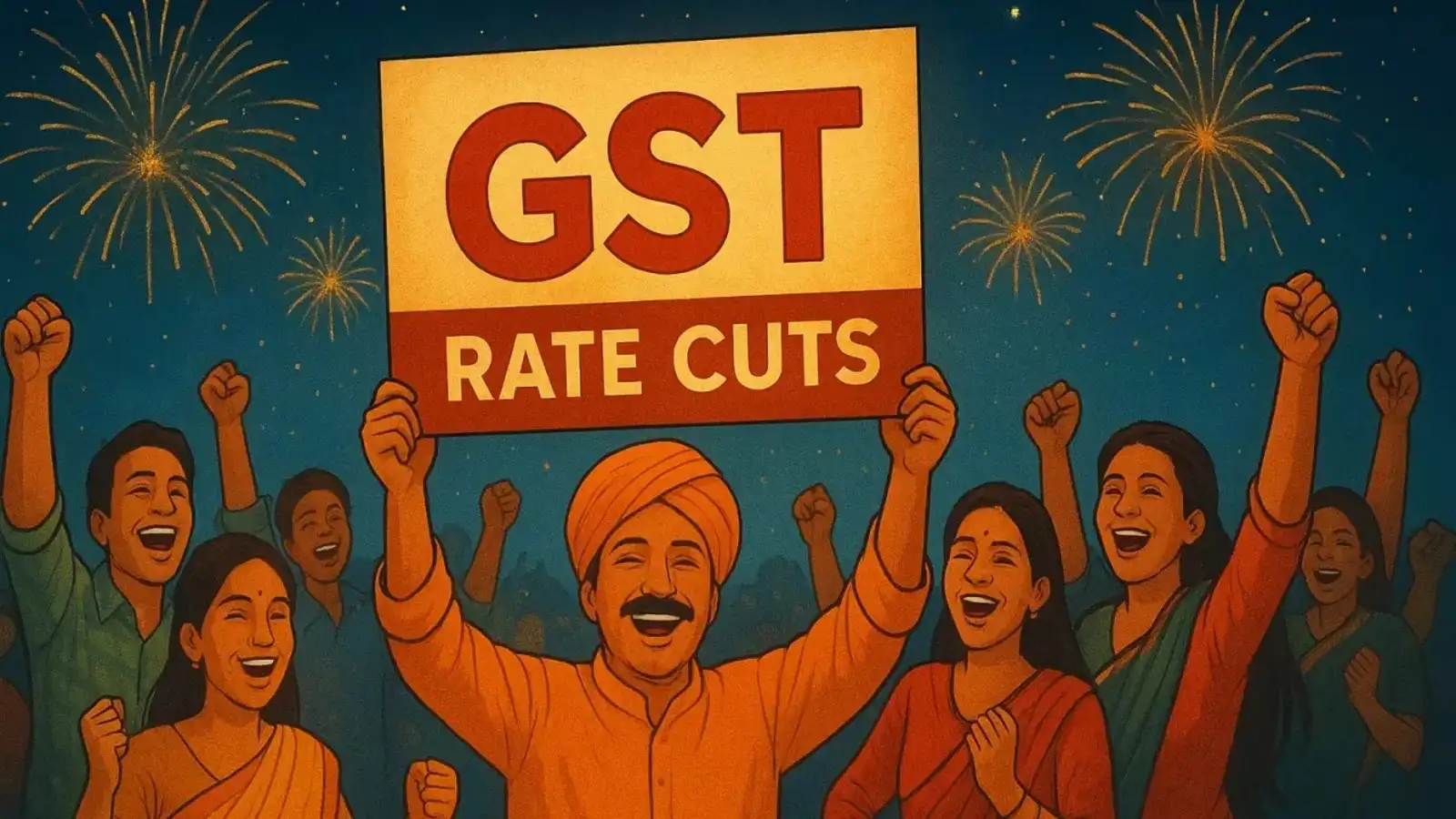

The government lowers GST on frequently used goods; the new rates will take effect on this month's 22nd.
The government has lowered the GST on a number of goods in various categories. The GST reduction rate will take effect on this month's 22nd. Finance Minister Nirmala Sitharaman told reporters in New Delhi today that the GST on goods used by the average person and middle class has been lowered from 18% or 12% to 5%. Hair oil, toilet soap, soap bars, shampoos, toothbrushes, toothpaste, bicycles, dinnerware, kitchenware, and other home items would now only be subject to 5% GST, the Finance Minister announced.She added that the GST rate on paneer, chena, and ultra-high temperature milk has been lowered from 5% to 0%, while the GST rate on all Indian breads would now be 0%. Additionally, Ms. Sitharaman declared that the GST on the following food items has been lowered from 12 or 18 percent to 5 percent: namkeen, bhujia, sauces, pasta, instant noodles, chocolates, coffee, preserved meat, cornflakes, butter, and ghee.The Minister further stated that the GST slab has been reduced from 28% to 18% for commodities such as air conditioners, televisions larger than 32 inches, all TVs, dishwashing machines, small cars, and motorbikes. According to her, labor-intensive businesses have provided substantial support, and today's measures will also benefit farmers and the agriculture industry. According to the Minister, the GST rate on all agricultural equipment has been lowered from 12% to 5%. Regarding the automobile industry: #GST on small cars and motorcycles up to 350 cc was lowered from 28% to 18%. # The GST on ambulances, buses, and vehicles was lowered from 28% to 18%. # GST on three-wheelers was lowered from 28% to 18%. # All auto parts were subject to a uniform 18% rate. GST reduction on medical supplies: #33 life-saving medications now have a 12% GST reduction instead of a 0% one. # Three life-saving medications used to treat cancer, rare diseases, and other serious chronic illnesses now have GST cut from 5% to 0%. # GST on certain medications was lowered from 12% to 5%.


Shanti Gold IPO: Key Allotment Info & GMP Update
Shanti Gold IPO Allotment Date in Focus: Check Latest GMP and How to See Your Allotment Status Online Investors are closely watching the Shanti Gold Initial Public Offering (IPO) as the allotment date draws near. The IPO, which saw a strong response from both retail and non-institutional investors, has built significant anticipation around the share allotment. The allotment status is expected to be finalized on August 1, 2025, after which applicants will be able to check if they have been allotted shares. As of today, the Grey Market Premium (GMP) for Shanti Gold shares is hovering around ₹35–₹40, indicating positive sentiment in the unofficial market. While GMP isn’t an official indicator, it often gives a glimpse into how the shares may perform on the listing day. Investors should still wait for the official allotment before drawing conclusions about returns. To check the IPO allotment status online, applicants can visit the website of the registrar handling the IPO — details are usually available in the official IPO documents. Common platforms include Link Intime or KFin Technologies, depending on the registrar assigned. Once on the website, you’ll need to enter your PAN, application number, or DP/client ID to check the status. Once the allotment is done, shares will be credited to the demat accounts of successful applicants, while refunds for unallotted shares will be processed within a few working days. Investors are advised to keep an eye on official channels for updates to avoid falling for rumors or misleading information.


Dollar Strengthens on Hopes of Improved U.S.-EU Trade Ties
The U.S. dollar edged higher on Monday as markets reacted positively to a newly signed trade agreement between the United States and the European Union. The pact focuses on lowering tariffs and easing trade procedures, signaling a potential thaw in years of economic tension. The greenback gained 0.4% against the euro and saw modest advances against other major currencies. Analysts say the agreement has boosted investor confidence, with expectations that improved trade flow could support U.S. economic growth. Although it is still in the early stages, the deal focuses on industrial goods and seeks to simplify regulatory rules. Officials from both sides expressed optimism that the pact could pave the way for broader cooperation in the future. Currency traders responded quickly, shifting toward the dollar in anticipation of a more stable trade environment. Attention now turns to upcoming U.S. economic data, which may offer further clues on the dollar’s direction.
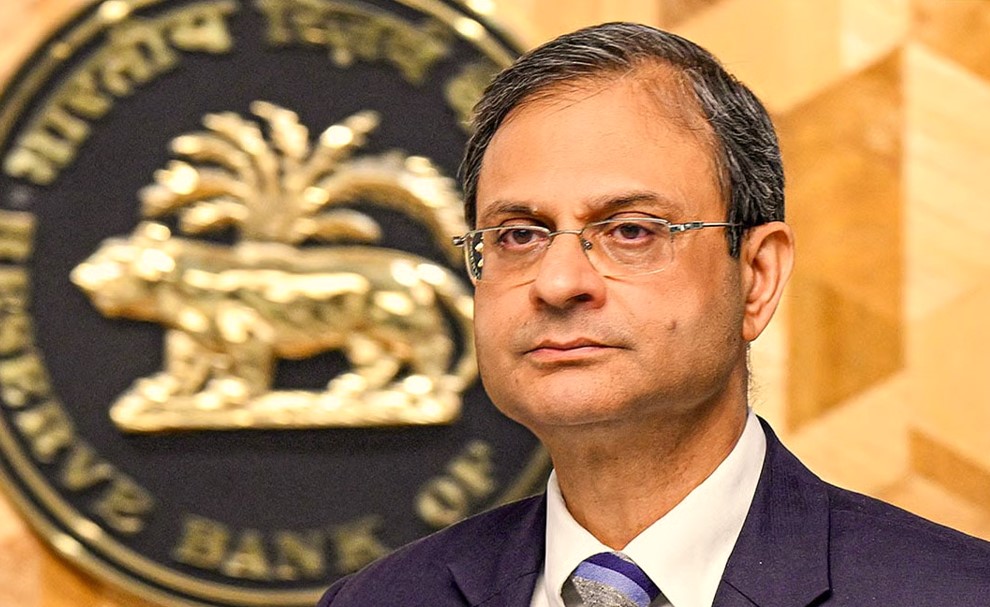

RBI Can Still Cut Rates Despite Neutral Stance, Says Governor Malhotra
Reserve Bank of India (RBI) Governor Sanjay Malhotra has clarified that the central bank’s current “neutral” policy stance should not be misunderstood as a signal that interest rates cannot be reduced. Speaking to reporters, Malhotra explained that neutrality gives the RBI flexibility—it can raise or lower rates depending on how inflation and the broader economy behave. “There seems to be a misconception that a neutral stance only allows us to hold or hike rates,” Malhotra said. “That’s not the case. We can cut rates if the situation demands.” His remarks come at a time when markets and analysts are closely watching for signs of a rate cut amid easing inflation and global monetary shifts. Since February 2023, the RBI has maintained interest rates, focusing on controlling inflation while monitoring economic growth. Recently, inflation has slowed, increasing expectations that a rate cut might encourage borrowing and investment without exacerbating inflation. Malhotra stressed that the RBI remains data-driven and won’t rush into decisions. “We will act based on incoming data. Our primary goal is to maintain stability while supporting sustainable growth,” he said. This balanced approach, he added, is what the neutral stance is meant to reflect. In short, while the RBI hasn’t cut rates yet, it’s keeping the door open. The message is clear: flexibility is key, and decisions will be shaped by how the economy performs in the coming months.
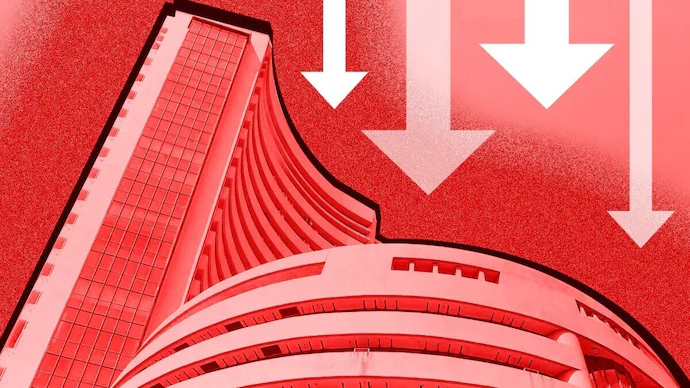

The NIFTY50 hovers above 22,800, the SENSEX jumps 1,131 points, and the whole market shines as well.
The NIFTY50 and SENSEX both ended the day at their one-month high. For the first time since February 21, 2025, the 50-share NIFTY 50 index surpassed the 22,800 level. Additionally, the BSE SENSEX leveled off above 75,000.Tuesday, March 18, saw a 1.5% increase in the Indian stock market due to strong buying in the financial and metals sectors and outperformance by the overall market. The encouraging global cues also improved market sentiment. The NIFTY50 and SENSEX both ended the day at their one-month high. For the first time since February 21, 2025, the 50-share NIFTY 50 index surpassed the 22,800 level. Additionally, the BSE SENSEX leveled off above 75,000. The NSE's NIFTY50 index closed 325.55 points, or 1.45%, higher at the 22,834.30 level, while the S&P BSE SENSEX closed at 75,301.26, up 1,131.31 points, or 1.53%. Out of the 3,016 equities that were traded on the NSE, 2,288 scrips rose, indicating that the market attitude continued in favor of bulls. At the end of the day, the smallcap and midcap indices both saw gains of nearly 2.8%. On Tuesday, all sectoral measures ended the day higher.Investors are also anticipating updates about tariffs and the US Fed's interest rate decision.


How have portfolio managers performed in terms of returns when comparing mutual funds and PMS?
Current Market News Live Updates for Today: Watch the market wrap-up for today! Follow the fluctuations of the Sensex and Nifty 50, as well as the top winners and losers. See which sectors drove the growth (or drop) and how the US and Asian markets performed. Summary: For up-to-date information on your favorite businesses, follow Mint's market blog. This blog provides you with up-to-date information about global markets and Dalal Street.Late September 2024 saw the top of the Indian equity market, with many large-, mid-, and small-cap companies reaching all-time highs. But ever since, the market has been in a gloomy mood as investor morale has been affected by headwinds including high valuations, a slowdown in profitability, uncertainties around international trade, etc. As of February 21, 2025, the BSE Sensex has down 12.2%, the BSE Midcap has fallen 18.6%, and the BSE Smallcap index has fallen 20.5% from its peak.Based on 5-month returns, NAV decreases of 4–26% have been recorded for equity mutual funds across all categories as a result of the market's severe downturn.
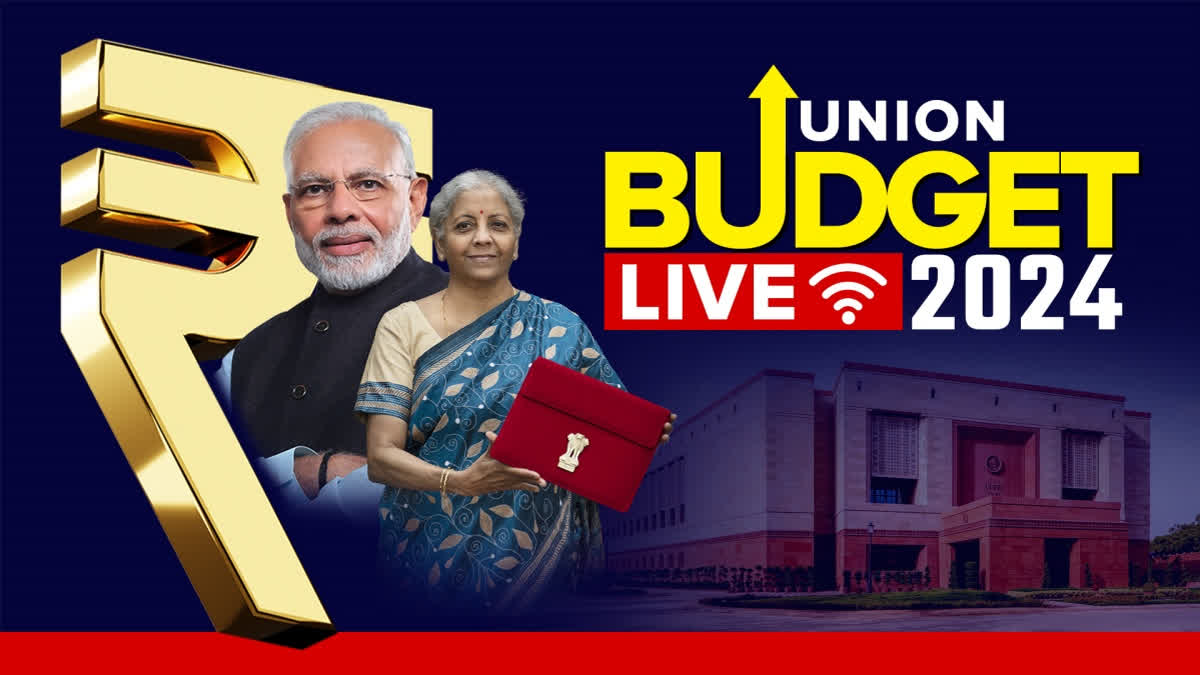

Highlights of the Budget and Economic Survey: As the budget session starts, FM Nirmala Sitharaman presents the Indian economy report.
Highlights of the Budget and Economic Survey: On January 31, Union Finance Minister Nirmala Sitharaman will deliver the Economic Survey, which examines the Indian economy, governmental policies, and prospects for the future. It discusses socioeconomic problems including poverty and education as well as macroeconomic performance.Highlights of the Budget and Economic Survey: On January 31, Union Finance Minister Nirmala Sitharaman will deliver the Economic Survey to Parliament, which will include a thorough examination of the Indian economy with an emphasis on a few important areas. Economic Survey: What Is It? The Indian economy's performance, governmental policies, and prospects for the next fiscal year are all summarized in the Economic Survey. It is separated into two sections: Part A examines economic performance, focusing on fiscal trends and macroeconomic statistics, while Part B discusses socioeconomic concerns like poverty, education, climate change, and the prospects for GDP growth, inflation, and trade.The Economic Survey is created by whom? The Department of Economic Affairs' economic section, led by Chief Economic Advisor (CEA) V Anantha Nageswaran, prepares the Economic Survey. The Economic Survey will be presented by whom? One day prior to the budget speech, on January 31, Union Finance Minister Nirmala Sitharaman will deliver the Economic Survey to the Parliament.
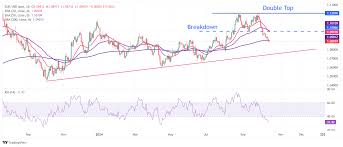

EUR/USD remains firm as Trump raises tariffs cautiously
As US President Donald Trump announced lower-than-expected tariffs on China, EUR/USD stayed strong above 1.0400. ECB's Lagarde cautioned that the Euro bloc should be ready for US tariffs, while ECB's Stournaras said that if the US imposes tariffs on the Eurozone, the pace of policy easing could quicken.In Wednesday's North American session, the EUR/USD maintains its rise above the crucial support level of 1.0400. As investors assess the United States' (US) clear tariff measures to construct new positions, the key currency pair continues to rise. Following a new two-week low of 107.75, the US Dollar Index (DXY), which measures the value of the US dollar relative to six major currencies, recovers intraday losses.United States (US) President Donald Trump is ready to hike 25% tariffs on Mexico and Canada and 10% on China, which will come into effect on February 1. Although he hasn't given specifics yet, Trump has also pledged to address trade imbalances with the Eurozone. Trump stated on Monday that he would either "raise tariffs or Europe buy more US oil and gas" to address the trade deficit. The US Dollar's (USD) demand as a safe haven is declining as a result of these tariff calls, which seem less alarming than what market players had expected from Trump's remarks during the election campaign.Traders may be forced to reduce their bets on the Federal Reserve (Fed) to maintain interest rates at their current levels for an extended period of time if Trump's tariff rises are less drastic than anticipated. Market investors currently anticipate that for the next three policy sessions, the Fed will maintain borrowing rates between 4.25% and 4.50%.


Highlights of the Manappuram Finance share price: Manappuram Finance closed at ₹193.8 today, up 5.64% from ₹183.45 yesterday.
Highlights of the Manappuram Finance Share Price: Manappuram Finance opened at ₹180.75 on the most recent trading day and ended the day marginally lower at ₹179.85. During the session, the stock hit a high of 186.25 and a low of 180.75. At a 52-week high of ₹230.25 and a low of ₹138.40, the firm has a market capitalization of ₹15,505.84 crore. 175,677 shares were traded on the BSE during the day.Lower open interest in Manappuram Finance and a higher futures price indicate that the current positive trend is waning and that the stock may top out here or begin a reversal in the days ahead. Live Updates for Manappuram Finance Share Price: The share price of Manappuram Finance ended the day at ₹193.8, which was 5.64% higher than its previous closing price. Important resistances to keep an eye on for the upcoming trading session are 198.03, 202.56, and 210.12. Key support levels, however, were located at 185.94, 178.38, and 173.85.Manappuram Finance Live Updates: The share price of Manappuram Finance is currently moving between the important support and resistance levels of ₹185.94 and ₹198.03 on a daily basis, with a current price of ₹193.8. We might anticipate another bearish action if it breaks over the ₹185.94 support level. However, there will be a bullish reaction if the price crosses 198.03.


Tech View: Thursday trading strategy: Nifty's short-term trend is poor; a breakout above 23,350 could lead to an upside bounce.
The lower tops and bottoms pattern is still there, and the Nifty's short-term trend is still weak. A possible new lower top is in line with the recent pullback, awaiting confirmation. The upside may be strengthened with a clear rise above 23,300–23,350, while 23,050 is a crucial support level. These pivotal levels for market direction are highlighted by HDFC Securities' Nagaraj Shetti.A little red candle was formed on the daily chart of Nifty on Wednesday, with minor upper and lower shadows. This market behavior usually suggests a turbulent movement in the market with a favorable bias. The current retreat may coincide with the pattern's new lower top, and the negative chart pattern, which includes lower tops and bottoms, is still there. However, confirmation of the lower top reversal is required at the highs. The Nifty's short-term trend remains weak. A steady rise above the 23,300–23,350 resistance levels would reinforce the market's upward rebound. According to HDFC Securities' Nagaraj Shetti, 23,050 will be a vital support for the market at the lows. There has been a significant selling of AU SFB from higher levels. There may be indications of a reversal from lower levels as the stock is stabilizing close to important support zones. If the upward trend continues, this consolidation phase suggests that a breakout may occur.The stock is about to break out of this zone of consolidation. It may be able to rise higher, aiming for 650, if AUBANK is able to hold onto its position above 600. Improved technical indications, such as the RSI at 56.07, which is heading upward and showing strength, reinforce this optimistic perspective.AUBANK has recently surpassed its short-term (20-day) and medium-term (50-day) EMAs, further reinforcing the bullish sentiment. If the stock continues to gain strength, it could bounce higher and attempt to retest its long-term (200-day) EMA, suggesting further upward potential.


S Naren warns that SME IPOs are the most hazardous segment of the market.
Indeed, SME IPOs are the most risky segment of the market, according to S Naren, the Chief Investment Officer (CIO) of ICICI Prudential Mutual Fund. Retail investors should steer clear of SME IPOs, according to Naren, who has expressed worries about their quality. Citing largecap stocks' better performance, he also advises investing in them rather than small and midcap stocks. Naren's remarks follow an average return of almost 86% from 240 SME IPOs in 2024. Naren added that the regulator is worried about the derivatives market and SME IPOs.S Naren, the CIO of ICICI Prudential Mutual Fund, has cautioned retail investors against investing in what he refers to as the most risky segment of the market, given that 240 SME IPOs had an average return of almost 86% in 2024.Even with SME IPOs, where we have been concerned about the quality, investors have been optimistic about IPOs. Although we are fortunate not to be required to take part in them, we are rather concerned about the caliber of initial public offerings. Additionally, the regulator has been concerned about the derivatives market as well as SME IPOs," Naren said reporters during a briefing.


Today's stock market: Asian stocks are divided as Wall Street emerges from its holiday-season slump
HONG KONG (AP) — Following Wall Street's recovery from the holiday season blues, Asian stocks are uneven, with markets in China and Tokyo seeing declines.As Tokyo's market reopened following the lengthy customary holiday, the finance minister of Japan rang in the New Year, and employees wearing suits and kimonos applauded for good fortune in 2025.Katsunobu Kato, the finance minister, declared that the Japanese government would take action to assure economic growth driven by investment and salary rises. He also promised to "grasp signs of recovery" and make sure that "every single citizen can feel the improvement in their salaries."Much of Asia has been wary of possible changes under President-elect Donald Trump, who has pledged to drastically increase tariffs on imports from China and other nations, which might impede growth for a region that depends significantly on trade. After U.S. President Joe Biden turned down Nippon Steel's roughly $15 billion offer to buy Pittsburgh-based U.S. Steel Corp., the company was predicted to file a lawsuit. On Monday, Nippon Steel's stock dropped 0.7% in Tokyo. On Friday, U.S. Steel's stock fell 6.5%. Hong Kong's Hang Seng fell 0.5% to 19,654.82, while Tokyo's benchmark Nikkei 225 index fell 1.6% to 39,258.25. At 3,194.20, the Shanghai Composite index fell 0.5%.



















